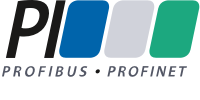Project
In process automation, plant owners and operators increasingly experience the value of intelligent, predictive, digital plant instrumentation. When Fortescue, one of the largest mining companies worldwide and located in Australia, developed their Solomon Hub mine, they installed a large PROFINET Industrial Ethernet network. This network played an enormous role in productivity and efficiency improvements. It helped to capture real-time data from various machinery and devices in the field. This allowed the business to monitor not only its asset and production levels but also the health of its machinery. As a result, predictive data has identified issues ahead of time, allowing pre-ventative maintenance and ensuring smooth operation. Incredibly, the cost of producing a ton of iron ore was reduced by almost 66%. This was an essential result from Fortescue’s strategy to employ the latest automation technology to support productivity goals.
But, a business needn’t be the size of Fortescue to realize the types of competitive advantages that digital communication networking offers. Also legacy plants can, with small moves, share in the value of digitalization.
Solution
The solution is simply the upgrading of legacy systems, not making an instant leap to “Industrie 4.0”! Even small moves towards a modern control system can open a door and allows a business to begin appreciate the value of access to data. Performing a relatively minor upgrade in a small part of a plant, from an analogue system to a digital platform, may realize entirely unexpected benefits. One company in Australia, for example, was fed up with sourcing increasingly rare spare parts for his leg-acy system so commissioned a digital fieldbus. Soon after its installation, a machine was automatically shut down because the newly intelligent fieldbus devices sensed a serious problem in the transformer and therefore the new system switched that machine off, before the motor would have been destroyed. That saved a lot of equipment damage, and they were able to quickly fix the transformer and get everything up and running again. This predictive maintenance capability, knowing about issues before they become serious problems, is just one of the many benefits of digital systems.
Conclusion
Small upgrading steps in a legacy plant offer the ability to keep the plant running more efficiently with less downtime, less unplanned maintenance, faster change-over time and increasing quality and throughput. Implementation usually starts off on a small scale, which helps to control costs and to develop an appreciation of the real-world benefits the digital system offers. Installing a new technol-ogy plant-wide is difficult and sometimes daunting. Often the best approach is to simply identify the issue that is causing the most trouble and then work with an automation industry partner to develop a solution to this very problem.


